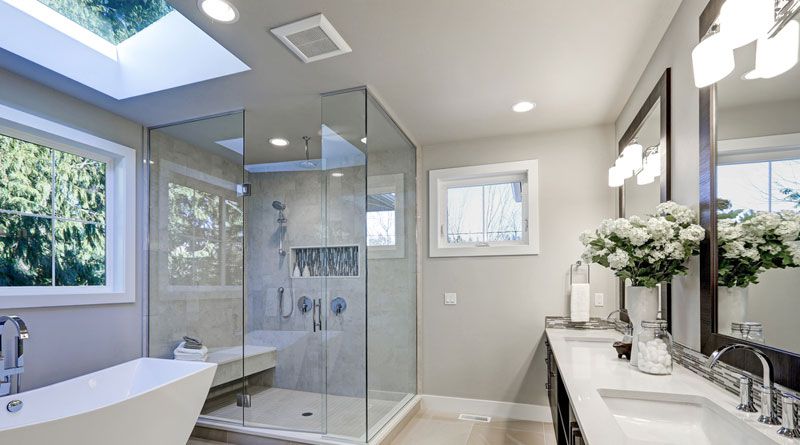In choosing a house or apartment, we have different preferences and requirements that need to be met. But there is something that we all agree on that these residents need to have enough storage space to house their belongings. One of these storage spaces is in an area of the house where most of us consider the most important part of the house because of the activities we do inside of them and also the tranquility and relaxation it provides after an exhausting day, the bathroom.
In the bathroom, we have a few storage spaces that we use in our day-to-day lives. These include bathroom cabinets and shelves. Bathroom cabinets may come in all forms of shape and sizes. This article will focus on the main material used in these bathroom cabinets, why they are used, and their advantages and disadvantages.
1. Solid wood
In the olden times, most cabinets in our houses are made with solid wood. Solid wood is very sturdy and can be carved, which is an appropriate material to build cabinets from. As we progressed to modern times, more types of cabinets were conceived which requires more attention than others.
Bathroom Cabinets are tricky because of the environment it has to be in. Changes in temperature, humidity, and wetness can affect solid wood since they are prone to warping, cracking that will lead to decay of the material. Thus the best Solid wood to use in making a bathroom cabinet are White Oak and Teak.
White Oak and Teak are water, warping, and insect resistant, and perfect for the bathroom environment. It also requires less maintenance, thus a great choice for material.
2. Medium-Density Fibreboard
Since times have progressed, mankind thought of a way to recycle hardwood and softwood residuals and combine them, thus the fibreboard was born. Fibreboard is a wood product by breaking down hardwood or softwood and combining it with wax or resin through the application of high temperature and pressure.
As the name implies, Medium-density Fibreboard or MDF is a fibreboard that is compressed to a point where the final product can be classified as medium density compared to other fibreboards. This product is light and sturdy, perfect for making a cabinet. The price of MDF cabinets is lower compared to that of solid wood cabinets.
For bathroom cabinets, MDF does not warp when it is exposed to varying temperature changes but it is poor against water absorption which promotes decay or molds if not treated properly. It is also weak against extremely high temperatures which melt the wax or resin binder but can be solved through the use of a heat-resistant MDF. We can also use Water-resistant MDF to solve water absorption issues.
3. High-Density Fibreboard
High-Density Fibreboard or HDF and MDF are made with the same material. The only difference is the process in which the HDF undergoes which is much more rigorous than MDF which makes the product harder. HDF is also more expensive than the MDF but cheaper than solid wood. Even though a common HDF is more water-resistant than an MDF it is still recommended to use water-resistant HDF in making bathroom cabinets to ensure the longevity of the product.
4. Plywood
The next material is plywood. Plywood is a manufactured wood by gluing several thin sheets of hardwood or softwood. The sheets are glued together in which each sheet has been layered against the grain of each sheet to produce a sturdier and denser product.
Plywood is undoubtedly one of the best materials in making cabinets because of its durability and hardness but for bathroom cabinets, it is advised to make use of exterior plywood. Exterior plywood is much more water and moisture resistant than that of a normal one. It can also withstand varying temperature changes. Marine-grade plywood is also an option, it is highly water and moisture resistant.
5. PVC
Finally, we have Polyvinyl Chloride, also called PVC. It is a widely produced synthetic polymer and is one of the most commonly used ones. Its application may include construction, electronics, automobile, furniture, and more.
As for PVC cabinets, they are very common nowadays because of being waterproof, insect-proof, oil proof, and rustproof. This material is very common in making bathroom cabinets because of its many advantages and low prices. One disadvantage to this material is that once it ages, the material becomes brittle, thus prone to cracking and breaking. Another is that when it gets damaged, it is harder for it to be repaired or restored.
Conclusion
People nowadays have a lot of options in choosing the right bathroom cabinet, but there’s a lot of factors that affect the selection of these said cabinets. One of these factors is the materials used in making them, which literally can make or break them. This article has presented some pros and cons for these materials, but at the end of the day, the choice is still yours.

Namaste UI collaborates closely with clients to develop tailored guest posting strategies that align with their unique goals and target audiences. Their commitment to delivering high-quality, niche-specific content ensures that each guest post not only meets but exceeds the expectations of both clients and the hosting platforms. Connect with us on social media for the latest updates on guest posting trends, outreach strategies, and digital marketing tips. For any types of guest posting services, contact us on info[at]namasteui.com.


The detailed insights into different materials and their pros and cons are helpful for anyone considering a cabinet upgrade. It’s great to have a guide that considers both aesthetics and functionality. Time to weigh my options for that perfect bathroom cabinet!